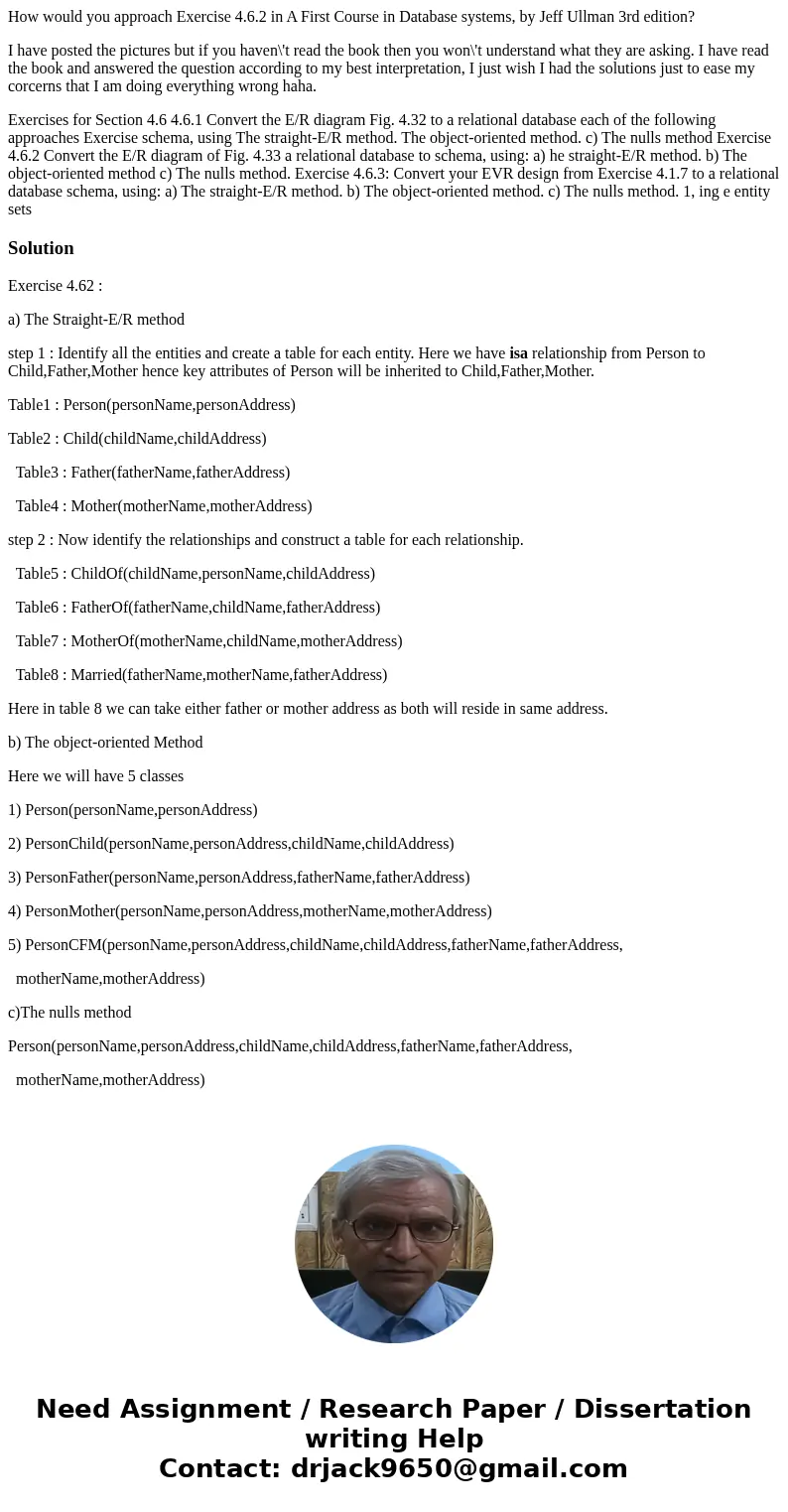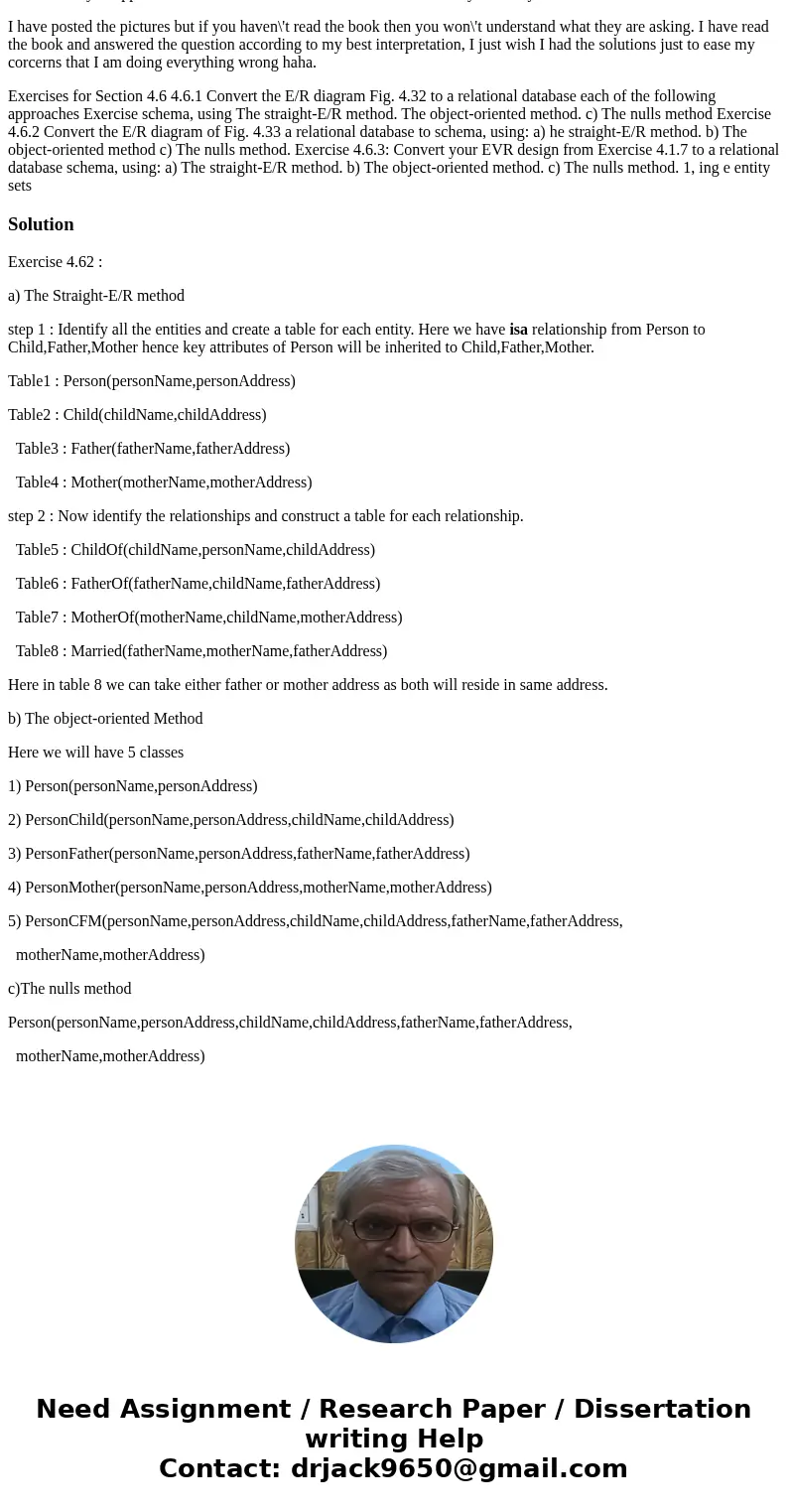How would you approach Exercise 462 in A First Course in Dat
How would you approach Exercise 4.6.2 in A First Course in Database systems, by Jeff Ullman 3rd edition?
I have posted the pictures but if you haven\'t read the book then you won\'t understand what they are asking. I have read the book and answered the question according to my best interpretation, I just wish I had the solutions just to ease my corcerns that I am doing everything wrong haha.
Exercises for Section 4.6 4.6.1 Convert the E/R diagram Fig. 4.32 to a relational database each of the following approaches Exercise schema, using The straight-E/R method. The object-oriented method. c) The nulls method Exercise 4.6.2 Convert the E/R diagram of Fig. 4.33 a relational database to schema, using: a) he straight-E/R method. b) The object-oriented method c) The nulls method. Exercise 4.6.3: Convert your EVR design from Exercise 4.1.7 to a relational database schema, using: a) The straight-E/R method. b) The object-oriented method. c) The nulls method. 1, ing e entity setsSolution
Exercise 4.62 :
a) The Straight-E/R method
step 1 : Identify all the entities and create a table for each entity. Here we have isa relationship from Person to Child,Father,Mother hence key attributes of Person will be inherited to Child,Father,Mother.
Table1 : Person(personName,personAddress)
Table2 : Child(childName,childAddress)
Table3 : Father(fatherName,fatherAddress)
Table4 : Mother(motherName,motherAddress)
step 2 : Now identify the relationships and construct a table for each relationship.
Table5 : ChildOf(childName,personName,childAddress)
Table6 : FatherOf(fatherName,childName,fatherAddress)
Table7 : MotherOf(motherName,childName,motherAddress)
Table8 : Married(fatherName,motherName,fatherAddress)
Here in table 8 we can take either father or mother address as both will reside in same address.
b) The object-oriented Method
Here we will have 5 classes
1) Person(personName,personAddress)
2) PersonChild(personName,personAddress,childName,childAddress)
3) PersonFather(personName,personAddress,fatherName,fatherAddress)
4) PersonMother(personName,personAddress,motherName,motherAddress)
5) PersonCFM(personName,personAddress,childName,childAddress,fatherName,fatherAddress,
motherName,motherAddress)
c)The nulls method
Person(personName,personAddress,childName,childAddress,fatherName,fatherAddress,
motherName,motherAddress)


 Homework Sourse
Homework Sourse